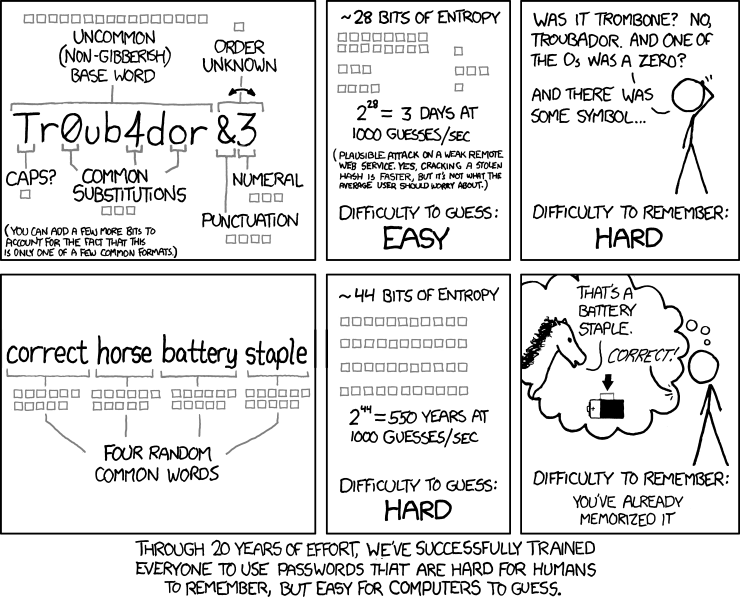As a tech enthusiast and social media addict, I‘ve spent more hours than I care to admit pondering the perfect password. You know the drill: at least 8 characters long, with a mix of uppercase and lowercase letters, numbers, and special characters. Oh, and don‘t even think about using "password" or "123456" (looking at you, Kanye). But just when I thought I had mastered the art of crafting a cryptic yet memorable code, along came The Password Game to put my skills to the ultimate test.
Introducing The Password Game
If you haven‘t heard of The Password Game, allow me to introduce you to your new favorite procrastination tool. Created by developer and designer Neal Agarwal, the game challenges players to create passwords that satisfy an increasingly absurd set of rules. Agarwal, who‘s also the mastermind behind popular coding projects like The Deep Sea and Absurd Trolley Problems, has a knack for turning complex concepts into addictive diversions.
The Password Game starts off simple enough, with requirements like "Your password must be at least 8 characters long" and "Your password must include an uppercase letter." But as you progress through the levels, the rules get more and more ridiculous. By the time you reach level 18, you‘re tasked with creating a password that includes elements with atomic numbers that add up to 200. Wait, what?
Atomic Numbers 101
If your high school chemistry knowledge is a bit rusty, fear not. Here‘s a quick refresher on atomic numbers:
An atomic number is a fundamental property of an element that represents the number of protons in its nucleus. In other words, it‘s the number of positive charges in an atom‘s core. Each element on the periodic table has a unique atomic number, starting with hydrogen at 1 and increasing sequentially as you move down the table.
To illustrate, here‘s a data table with some common elements and their atomic numbers:
| Element | Symbol | Atomic Number |
|---|---|---|
| Hydrogen | H | 1 |
| Helium | He | 2 |
| Lithium | Li | 3 |
| Beryllium | Be | 4 |
| Boron | B | 5 |
| Carbon | C | 6 |
| Nitrogen | N | 7 |
| Oxygen | O | 8 |
As you can see, the atomic number corresponds to the element‘s position on the periodic table. The higher the atomic number, the more protons (and thus, positive charges) an element has.
Solving the Elemental Password Challenge
So how do you go about creating a password that incorporates elements with atomic numbers totaling 200? The key is to think strategically and choose elements that efficiently reach the target sum.
One option is to simply spam the letter "H" (for hydrogen) 200 times, since hydrogen has an atomic number of 1. However, this brute force approach may clash with other password rules and result in an unwieldy, impractical password.
A more elegant solution is to combine elements with larger atomic numbers to reach 200 with fewer characters. For example:
- 2 fermium (Fm) atoms: 2 x 100 = 200
- 5 zirconium (Zr) atoms: 5 x 40 = 200
- 10 calcium (Ca) atoms: 10 x 20 = 200
- 25 oxygen (O) atoms: 25 x 8 = 200
Of course, there are countless other combinations that can achieve the desired sum. The challenge is finding one that satisfies all the previous password rules as well.
Password Policies vs. Usability
While The Password Game is undeniably entertaining, it also serves as a commentary on the often absurd and contradictory nature of real-world password requirements. In an effort to enhance security, many websites and apps impose a dizzying array of criteria that users must meet to create an "acceptable" password.
However, research suggests that these complex rules may do more harm than good. A 2017 study by the National Institute of Standards and Technology (NIST) found that "composition rules" like requiring a mix of character types or prohibiting certain words "provide less benefit than might be expected" and can even "inadvertently encourage" risky behaviors like password reuse.
Cybersecurity expert Bruce Schneier echoed this sentiment in a blog post, arguing that "complexity rules result in a false sense of security" and lead to "lazy and annoying" password creation. The famous xkcd comic on password strength illustrates the point beautifully:

User sentiment seems to align with these expert opinions. A 2020 survey by Keeper Security found that 66% of respondents felt "frustrated" by complex password requirements, and 37% admitted to reusing passwords across accounts as a result.
As a tech geek and social media junkie, I‘ve certainly felt this frustration firsthand. I once spent a full 10 minutes trying to create a password for a new account, only to be thwarted by a vague error message telling me my password "did not meet the security requirements." After cycling through every permutation of my go-to password formula, I finally gave up and smashed my face on the keyboard in a fit of desperation. Ironically, the resulting string of gibberish characters was deemed "very strong" by the site‘s password meter. Go figure.
Tips for Better Password Management
So what‘s a security-minded netizen to do? While The Password Game pokes fun at the absurdity of complex password rules, the underlying message is clear: we need better, more user-friendly solutions for online security.
Here are a few tips to help you strike a balance between security and sanity:
Use a password manager like LastPass or 1Password to generate and store strong, unique passwords for each account. These tools can auto-fill your login credentials, so you don‘t have to remember a million different codes.
Enable two-factor authentication (2FA) whenever possible. This adds an extra layer of security by requiring a second form of verification (like a code sent to your phone) in addition to your password.
Prioritize length over complexity. As the xkcd comic illustrates, a longer password made up of random words can be more secure and memorable than a shorter, more complex one.
Avoid using personal information like birthdates or pet names in your passwords. These can be easily guessed by hackers who know a bit about you.
Don‘t reuse passwords across multiple accounts. If one account is compromised, all your other accounts with the same password will be vulnerable as well.
The Future of Online Security
As our lives increasingly move online, the need for secure, user-friendly authentication methods has never been greater. While The Password Game highlights the absurdity of current password requirements, it also sparks an important conversation about the future of online security.
Some experts believe that biometric authentication methods like fingerprint or facial recognition could eventually replace passwords altogether. Others propose using "zero-knowledge proofs" that allow users to prove their identity without revealing any sensitive information. Blockchain technology and decentralized identity systems are also being explored as potential solutions.
Whatever the future holds, one thing is clear: we need to rethink our approach to online security and prioritize solutions that balance security and usability. Because let‘s face it, life is too short to spend hours crafting the perfect password (unless you‘re playing The Password Game, in which case, carry on).
